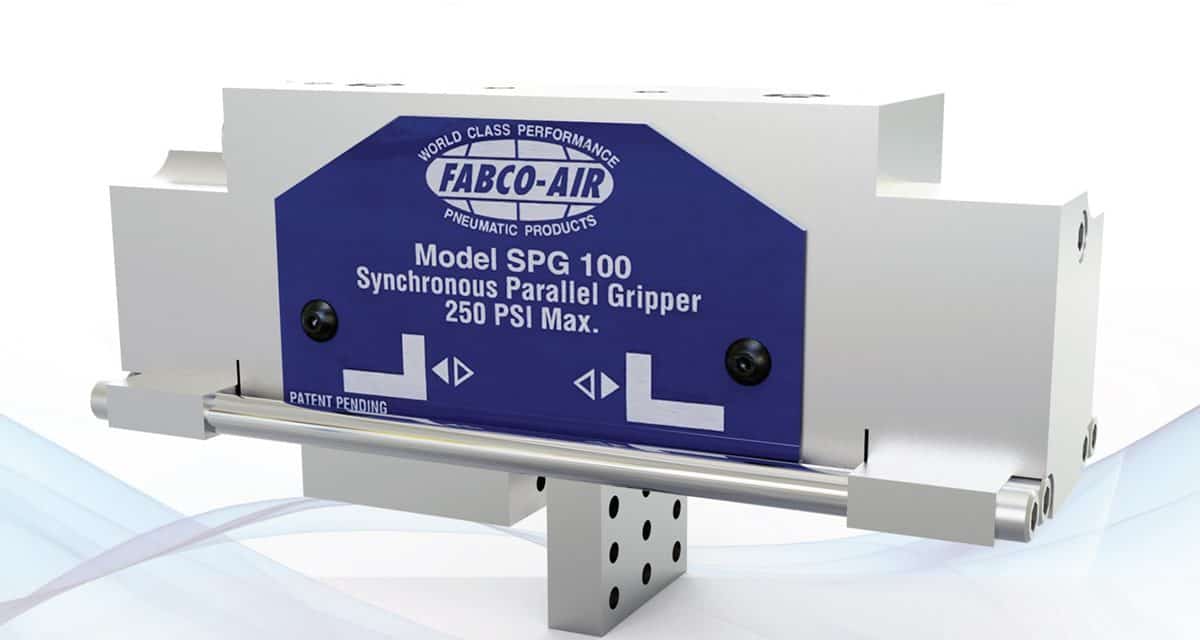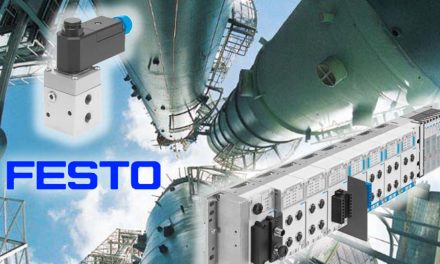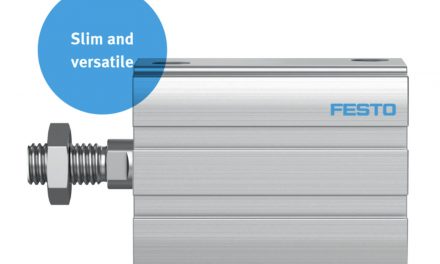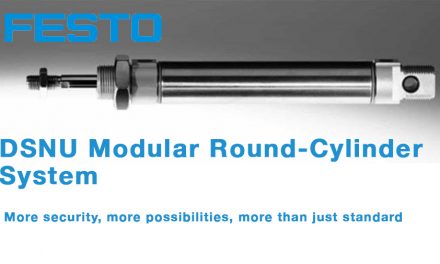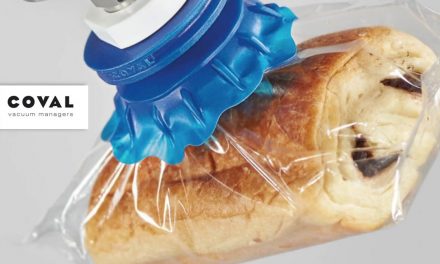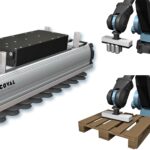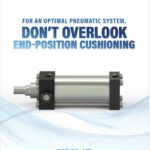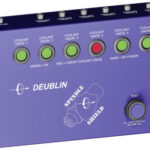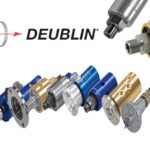Engineers no longer have to accept conventional gripper design flaws.
Pneumatic grippers are an integral part of pick-and-place, material transfer and part ejection applications in many industries, but many designs come with limitations. Conventional grippers often present mounting, repair and functional difficulties that can cause maintenance and performance problems.
Fabco-Air has developed a series of grippers that has only three moving parts. This novel design offers greater functionality and improved mounting versus conventional grippers — without the usual difficulties.
A SIMPLE DESIGN APPROACH USES JUST THREE MOVING PARTS
SPG Grippers’ streamlined design begins with stainless steel guide shafts press-fit and pinned to each gripper jaw. The shafts, which double as air pistons, are positioned diagonally and far apart for jaw stability. The third moving part — the rocker arm — links the jaws to synchronize their motion. It does not drive the jaws, so wear is minimal. The shaft of each jaw can pass freely through its counterpart’s enlarged holes. As shown in the photo, Three Moving Parts, “C” indicates the opposing piston when the jaw closes, while “O” indicates the opposing piston for opening the jaw.
Four cylinders are bored into both blocks and connected by internal passages to “C” and “O” in the photo. Each heat-treated aluminum cylinder houses four linear bearings. Using a non-lubricated air supply, these bearings provide clean, drip-proof operation.

Four dowel pins keep the porting block perfectly aligned with the cylinder blocks. Eight linear bearings guide four pistons through the entire length of the gripper body. This construction maintains a centering accuracy of 0.002 inch with 0.0015 inch or less of side play per jaw.
IMPROVED FUNCTIONALITY, ACCURATE GRIPPING AND LESS MAINTENANCE
Many traditional gripper designs are characterized by a “metal on metal” sliding gib in a “T” slot and narrow support area that can deflect and cause play. Another design limitation: The power system is typically positioned far above the jaw. The jaw is driven by a “linkage” that creates a bending moment that causes loss of force and creates wear points.

SPG Series jaws are guided by four stainless steel guide shafts supported by eight high-performance linear bearings. The guide shafts are positioned farther apart, so there’s more support area without the deflections and play that hamper traditional gripper designs. In addition, the SPG gripper jaws are powered directly by air pressure applied to the ends of the guide shafts which act as pistons. Four equal pistons power the jaws inward, and four equal pistons power the jaws outward.
This construction eliminates the piston-to-jaw linkages and metal-on-metal sliding gibs in “T” slots. Bending moments are significantly reduced because force is applied directly to the jaw units close to the gripping surface to minimize loss of force which can otherwise create maintenance issues. The opening and closing forces are equal, so the grippers may be used for both outer diameter (OD) and inner diameter (ID) gripping.
SPG Grippers also make it easy to verify parts presence or gauge part sizes. The units are symmetrical, so users can install proximity sensors on each end of the gripper: Two sensors on one side of the gripper can verify full-open and full-close jaw positions, while the two sensors on the opposite side can be set so that each one is just made when a part is gripped. An oversize, undersize or missing part will cause enough jaw travel that one of the two sensors will drop out to indicate a no-go situation. If both sensors are made, a gripped part is present and within tolerance.
MOUNTING IMPROVEMENTS ADD VERSATILITY
Whether you’re trying to attach tooling to a gripper jaw, attach a gripper to a mating actuator arm or replace a gripper without major adjustment and realignment, conventional gripper mounting surfaces can be problematic.
To make tooling attachment easier, SPG Gripper jaws have three rows of tapped mounting holes and dowel holes for greater mounting versatility:
- Straight jaws attach inexpensive blade-type gripping fingers with pockets used to grip rectangular parts.
- Angle jaws have a slip-fit dowel hole and a slip-fit dowel slot to precisely attach end tooling without the burden and expense of maintaining perfect dowel centerlines. The angle jaws and a pair of easy-to-make “Vee Blocks” are used for gripping cylindrical parts.
- Interface blocks can be attached to angle jaws to allow tooling to be mounted on any side of the gripper. The interface blocks in Figure 5 provide side-tapped holes for mounting offset blade-type gripping fingers.

When attaching to a mating arm, the grippers can be easily doweled into mounting surfaces using two approaches:
Approach 1. Option “A” provides a locating dowel on top center of the gripper. Machine a slip-fit channel 0.030 inch deep into the customer’s tooling to accept gripper dimension “B”. B is machined to a tolerance of ±0.001 on all SPG models. The gripper mounts by slipping its dowel into a slip-fit hole and pushing the unit into the machined channel. Removal is easy, and the user does not have to pry the gripper from two stuck dowel holes.
Approach 2. Using the slip-fit dowel slot included with the center locating dowel pin Option “A,” the gripper center line can be established on an x-y plane. The end dowel locates the x axis to prevent location. The “Q” dimension, while not critical, can be held to ±0.005 and still provide precise engagement in the gripper dowel slot.
And when it comes to gripper interchangeability, most do not hold close tolerances and typically require major readjustments and realignment. SPG Grippers eliminate this problem because they are very precisely machined on a specially tooled four-axis CNC machining center. Fabco-Air does 100 percent of the manufacturing in-house to ensure the grippers interchange perfectly with each other.

 LESS PARTS MEAN EASY REPAIR
LESS PARTS MEAN EASY REPAIR
Because SPG Grippers have only three moving parts and six total parts, repair is easy. The left and right jaws are identical as well as the left and right cylinder blocks. And the porting block is doweled to cylinder blocks. The units can be disassembled and reassembled in minutes without the need to adjust gibs or to time or synchronize mating parts.
THREE-POSITION JAWS AS A SPECIAL DESIGN
In addition to two-jaw models, three-position grippers are possible with the addition of a tandem piston at one end. When line pressure is applied to the tandem position, it overrides the “jaw open” force and will position the jaws in a “mid” location. From there, the jaws can either open or close to allow ID or OD gripping if a family of parts has to be handled with the same gripper.
BREAK FROM THE GRIP OF TRADITIONAL GRIPPERS
While traditional pneumatic grippers have been a mainstay in material and part handling, their design flaws have always given engineers functionality and mounting difficulties. SPG Series pneumatic grippers with their efficient and unique three-moving-part design are poised to make many of the problems associated with grippers a thing of the past.

